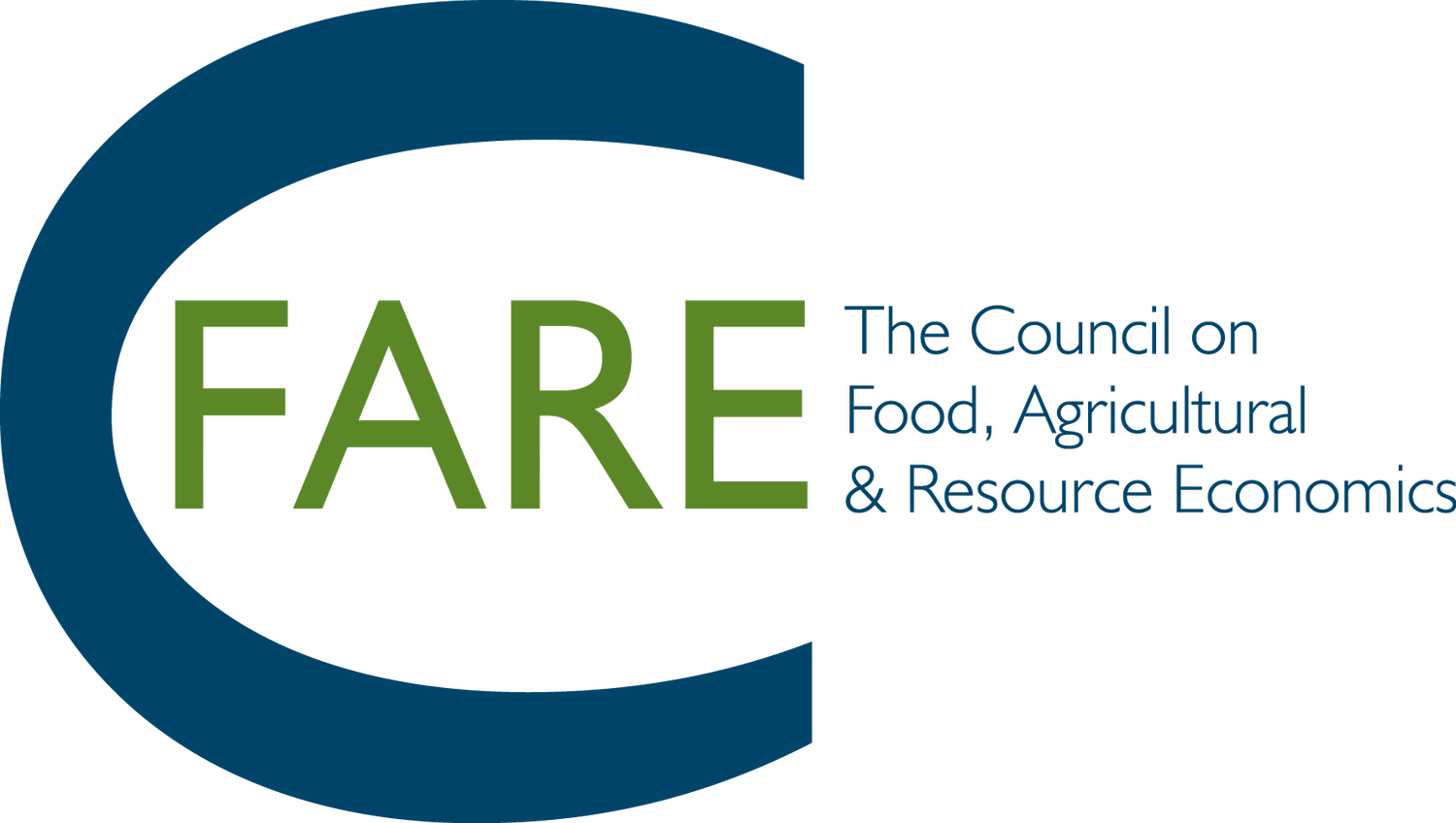Global Food Security: What Have We Learned?
The C-FARE webinar in January focused on global food security, which is a necessary first step towards many other goals of U.S. foreign policy, as well as our humanitarian and environmental objectives. The U.S. government has long played a key role in measuring and pursuing food security at home and globally, addressing a wide range of threats to agricultural production, food distribution and access to healthy diets. The January webinar provided a global counterpart to November’s C-FARE webinar that focused on U.S. domestic food security. To address global food security in the January event, we addressed how food security is measured, and what we have learned about the policies and programs needed to achieve our food security goals in the face of global shocks such as COVID, conflicts and climate change.
For this webinar C-FARE assembled a panel of four experts, starting with a presentation on how global food security is measured to inform Congress and other policy makers by Yacob Zereyesus of the United States Department of Agriculture (USDA), and then Maximo Torero on how the Food and Agricultural Organization (FAO) of the United Nations measures food security for other governments, followed by Saskia de Pee of the World Food Program (WFP) on how governments intervene with humanitarian and emergency assistance, and concluding with Rob Bertram of USAID on how U.S. investments under the Global Food Security Act are acting to prevent food insecurity in the future.
Yacob Zereyesus, Senior Economist, Economic Research Service, USDA
How USDA measures food security, and how the data are used in Congress and elsewhere
The USDA’s Economic Research Service (ERS) monitors and projects food availability and access in its annual International Food Security Assessment (IFSA) report, providing data up to 10 years out on 77 low- and middle-income countries with a total population of over four billion people. The goal of IFSA is to track food security, based on the definition as the ability of all people, at all times, to access sufficient, safe and nutritious food for an active and health life. In this regard, the four pillars that define food security are: Availability, Access, Utilization, and Stability. Beyond humanitarian response, understanding trends in food security is important for many aspects of U.S. policy, including market development for U.S. exports. IFSA uses a demand-oriented framework that responds to changes in price and income to capture food access and captures the contribution of income inequality to food insecurity.
In the IFSA, a caloric threshold of 2,100 calories per capita per day is used to develop three indicators of food insecurity: the share of food insecurity, the number of food insecure people, and the food gap (the food needed to raise to the caloric threshold at every income). IFSA data is used to inform and enhance policy decision-making. The key clientele include: USDA policy officials, Congress, other federal agencies, state and local government officials, and organizations, including farm and industry groups. The IFSA uses multiple research and data products to inform policy decision-making, including: staff analyses and briefings, webinars and presentations, and data releases (Amber Waves, peer-reviewed agency reports and ERS websites).
Maximo Torero, Chief Economist and Assistant Director-General for Economic and Social Development, Food and Agriculture Organization (FAO) of the United Nations
How FAO measures food security, and how those data are used by national governments and UN agencies
FAO is constitutionally mandated to “collect, analyse, interpret and disseminate information relating to nutrition, food and agriculture” (Art I of FAO Constitution). Since its inception in 1945, FAO has responded to the mandate through the operation of a Statistics Division, and the publication of a series of reports including the World Food Surveys (1946, 1952, 1963, 1977, 1987, 1996), State of Food Insecurity in the World (1999-2014), State of Food Security and Nutrition (2016-today). Indicators under FAO’s custodianship have been traditionally used in official, global monitoring frameworks: World Food Summit Target (1996-2015), Millennium Development Goals [MDG] (1999-2015), Sustainable Development Goals [SDG] (2015-2030, and CAADP.
Diverse aspects of food security and nutrition are monitored by FAO through a decentralized data and statistics system. The FAO’s Nutrition Division works on defining and advocating for the use of proper food-based nutrition indicators, the Trade Division monitors food commodity markets and trade, including by providing support to the Agricultural Market Information System (AMIS); and the Emergency office collects, analyzes, and disseminates data on agriculture and food security of the agricultural communities in food crisis countries. In addition, FAO is a founding member of the Integrated Food Security Phase Classification (IPC) consortium and contributes with data, tools, and methods for the analysis of acute food insecurity in food crisis countries, to inform emergency, humanitarian responses.
Saskia de Pee, Chief of Analytics & Science for Food and Nutrition, World Food Program
How WFP monitors and responds to crises, included nutritionally targeted aid to meet humanitarian needs.
The WFP is the world’s largest humanitarian organization, delivering targeted aid in response to crises in Africa, Asia and worldwide, with coordinated actions designed to improve access and affordability of healthy, nutritious diets. These interventions serve to increase availability and lower prices of nutritious food, increase the nutrient content of foods, increase household income and food expenditure, and tailor actions to meet the specific needs of vulnerable individuals.
For example, in Kenya these programs encourage and enable spending on animal-source foods and green leafy vegetables to get best nutritional value for money, using a fresh food voucher that enables households to purchase foods that can reduce their affordability gap, and adding a complementary food supplement targeted towards children reduces the cost of a nutrient-adequate diet. In Indonesia, adoption of fortified rice leads to better nutrition and health, effectively providing more nutritional value for the money. Globally the WFP is scaling up its use of food system interventions to reduce the cost of nutritious foods and increase availability, using vouchers and transfers to reach target groups and improve nutritional outcomes in the most cost-effective possible ways.
Rob Bertram, Chief Scientist, United States Agency for International Development
How USAID programs build resilience, from humanitarian crises to long-term development
Agricultural productivity growth has made food substantially more affordable. Lower food prices are major drivers of poverty reduction and economic development, especially in low-income countries. This has a significant impact on poor people. Research is the primary driver of agricultural productivity growth, and allows those interested in agricultural productivity to deal with problems like demand ahead of population growth and climate change.
Bangladesh and Ethiopia are examples where agricultural-led development has worked. Accelerated agricultural total factor productivity (TFP) growth has contributed to falling rates of food insecurity, stunting, and poverty. “Agricultural-led industrialization” policy allocates 10% of government budget to agriculture, allowing for market development through support for research & extension, rural infrastructure, and provision of social safety nets. Globally, TFP growth has increased output with fewer inputs resulting in lower food prices and less land conversion. Sub-Saharan Africa has only recently benefited from new crop technologies and thus remains overly dependent on land expansion. This area of the world needs to transition to total factor productivity-led growth by adopting better methods such as fertilization or diversification. Today, three billion people cannot afford foods that would meet countries’ dietary guidelines. Context matters---what works in one part of the world is very different from others, so location-specific research and innovation is needed to cope with climate change, curb global cropland expansion and meet food needs in the decades ahead.
This program is supported in part by the Agricultural and Applied Economics Association and the US Department of Agriculture’s Economic Research Service, and the National Agricultural Statistics Service.
Those who register but cannot attend our webinar can always view a recording of it later at the council’s YouTube channel.




